#pro kataang
Explore tagged Tumblr posts
Text

Look at love for Kataang
I try this to do something new in my art !
#kataang#aang x katara#kataang defense#avatar the last airbender#pro kataang#katara#aang#atla#avatar: the last airbender#atla fanart#kataangtag#katara x aang#look at love for Kataang#I love them sm#theyre so cute
786 notes
·
View notes
Text
Soon we will see this powerful couple in a movie (It’s going be EPIC!!!)

#kataang#avatar the last airbender#atla#avatar#pro kataang#otp#katara and aang#aang and katara#aang x katara#avatar studios#kataang otp#atla kataang#kataang family#kataang atla
24 notes
·
View notes
Text
also, I hate to break it to the haters or whatever but like… kataang was legitimately the whole point of ATLA. yes, they really were that important to the narrative and your lack of understanding that fact shows that you had no grasp of the story as a whole. it 100% mattered that Katara and Aang ended up together as two survivors of genocide, both victims in the same way and both with a lost parent that died in their place.
it’s not “revolutionary” for Katara to magically fall in love with Zuko instead of Aang, the guy whose family led the regime that wiped out their cultures and stole their mother and father from them… Katara and Aang being together IS the revolution of the story!
them falling in love and being together in the end, in the wake of a new day, and a new era, was the conclusion of the story for a reason. their whole relationship embodies hope and peace that it is never too late for something good, even if it seems that there is nothing worth holding on for. their love for each other is a direct act of defiance against the very regime that not only stole everything from the both of them, but that also sought to destroy any trace of happiness either might experience… and it is their love for each other that defies said regime and that then rebuilds what was lost… and also create something new with their own children.
that was the whole fucking point of ATLA.
197 notes
·
View notes
Text
Aang, he’s just better than Zuko.
For Katara anyway.

Frankly even in Book 3, the season where Zuko was at his best, Aang was still kinder and more altruistic than Zuko.


In Sozin’s Comet (Part 1) both Aang and Zuko are driven to a rage breaking point due to the stress of the comet approaching and the others not taking the situation seriously enough, the others want to have fun at the beach while Zuko is concerned about Ozai’s genocidal plan, whereas Aang is concerned about having to kill Ozai, something the others don’t fully understand. Zuko gets violent and destructive, burning everything and attacking Aang to “teach him a lesson”, while Aang is genuinely angry which is verbally directed at the others (even Katara who trying to help), and so he leaves the situation to think out his dilemma. Guess who gets more flack from that side of the “fandom”.


You cannot convince me that Aang hating Zutara weirdos genuinely think Zuko is a kinder person than Aang simply because he learned familial abuse, violence, imperialism and colonialism were wrong and sought to improve himself. Or that he’s more mature than Aang for those same reason and because he’s less joyful. Zuko’s always been rather temperamental, even post-redemption arc.
They like Zutara for superficial reasons, nothing more. All of their media-illiterate “reasons” is amounts to nothing but misunderstanding The Southern Raiders.
These people will say Zuko is the only who supported and understood Katara. Lemme set the record straight, Zuko does a total of three significant “supportive” things for Katara, that’s it.


He has one moment of empathy when she mentions her mother dying in the cave, which is nice. She considers healing his wound and he ends betraying her. The way the Zutara shippers go on, you’d think they kissed in the cave like Oma and Shu.

Oh, wait.

Not only that but Zuko himself never reflects back on that moment with any remorse, he never apologizes to Katara, if anything HE gets annoyed when Katara is rightfully pissed off at him much later. Zuko is “the only one who understands Katara” right.
Anti-Aang Zutara morons LOVE to bring up Zuko taking Katara to confront Yon-Rha as if it’s the nicest thing anyone’s ever done for Katara as if it’s the only time Katara was ever cared for.

HOLY GLAZE BATMAN!
The MAIN reason Zuko did was specifically because he wanted Katara to stop hating him. He isn’t concerned about this will affect Katara about what choices she’s gonna make when she confronts this guy, or even if Sokka wants to tag along (he was kinda sidelined despite Kya being HIS MOM too).

Both Aang and Sokka are concerned for Katara not because “they idealize her.” They’ve known Katara the longest, They saw her break down when bloodbending, they don’t want her to do something that will mentally break her later on.


The only time Zuko shows genuine support and kindness in the episode is when he checks on Katara when she’s in control of Appa and when he hears exactly what happened to her mom, he shows genuine sympathy and understanding.
Cool. But this ONE moment in no way means he’s the only person who supports Katara.

He also saves her from Azula’s lightning. Great, really shows how far Zuko’s come as a person. But saving Katara’s life isn’t something exclusive to Zuko. Aang saved Katara too many times, just as she did for him.
Objectively speaking, Aang DOES support Katara, more times than Zuko.

If taking Katara somewhere is so very important (in regard to her tribe’s colonization no less), in the first darn episode Aang willingly agrees to take her to the North Pole to learn Waterbending. He’s nothing but supportive to Katara in regards to her Waterbending, supporting her in moments of insecurity, refusing to learn from someone who’s openly discriminatory to Katara and cheers her on when fighting the discriminator.


He goes out of his way for Katara several times throughout the series, going through hell and high water to get frozen frogs to cure Katara’s illness, securing her lost necklace which he knows is important to her culture, surrenders himself to Zuko so that he’ll leave Katara’s tribe, helps her commit eco-terrorism when she masquerades as the Painted Lady, inviting her to dance when she feels left out, leaving the Guru specifically to save HER, etc.

If it wasn’t clear already Aang cares about Katara emotionally, he calls her Sifu when she points out he’s never done so before, when he walls himself off from his emotions, much to Katara’s dismay, he later tells Katara that she was right about not losing sight of hope and his feelings (especially for Appa and for her) which she greatly moves her, when Jet died and Katara was forced to bloodbend Aang comforted her, simply by placing his hand on her shoulder, letting her know he was there, which she appreciated.

It’s thanks to Aang that Zuko even joined their team at all and even then, he specifically asks Katara if it’s okay (seeing as she feels so strongly about it) and she only agrees to go through with it because of Aang, which he appreciates.
People use The Southern Raiders as an example of Aang not understanding Katara, when if anything, it’s the opposite.


Aang himself knows what it’s life to feel “rage and pain” and appeals to Katara by brining up times he not only felt grief loosing his entire nation, his father figure, and Appa, the only living thing from his time and culture, all of which Katara comforting Aang over this by relating her own grief to his. Both have lost people they care about to the Fire Nation, both are kind people who once let themselves be driven by rage and pain, both are the last benders of their tribe. Even with Aang being concerned for Katara, he doesn’t invalidate her anger, he encourages her to confront her oppressor and even though she doesn’t forgive him, he accepts this.

In addition to everything else, Aang and Katara simply just bring out the best in each other, they’re friends first, they have fun together (penguin sledding started it all), they both have each other backs, they work extremely well together in combat as a battle couple, they both care deeply about the other and while the both admire each other strongly, they have an equal partnership and love each other flaws and all.
With all that said, can you really say Zuko was the only one who supported and understood Katara, because (aside from The Southern Raiders) he didn’t do anything super significant and factually speaking Aang clearly understood and supported Katara more than Zuko ever did.

Heck, even Sokka who was initially rather rude and dismissive of Katara in the first episode did more for Katara than Zuko as the show went on. Supporting her desire to save Aang in Episode 2, supporting her saving Haru, throwing hands with Aang when the later burned her, comforting her when she was sad about Aang’s capture at the North Pole, acknowledging how much Katara did for him when their mom died, purely so Toph would leave her alone, he was was good brother.
The Zutara brigade will cling to three moments where Zuko did anything for Katara because of the #aesthetic of their mid ship. Meanwhile they act like Aang not only did anything for Katara, but treated her like garbage, by naming three moments, all of which he either apologized for or realized he was wrong.
They only like the idea of Zutara in their Wattpad fanfics, as opposed to what Zuko and Katara’s relationship actually is and no matter how many times they deny it, it’s primarily based on aesthetic and superficial reasons.

If Aang was 16 like Zuko, they’d lap up all those Kataang moments like crazy, even Aang kissing Katara in EIP (which was bad) given how much they love Zuko kidnapping Katara (I’ll save you from the pirates).

If Zuko was 12 like Aang, Zutara wouldn’t even be a thing, especially by how immature and quick to anger Zuko is for a good chunk of the show. They’d see Katara try to heal Zuko and think “it’s a mom caring for her child”, they’d see Zuko get mad at Katara for not trusting him and see Zuko throw a fiery, violent tantrum at Aang in Sozin’s Comet and say “he’s way too immature to be with Katara”.
The hypocrisy snd double standards of these morons are insane.
Shipping obsessed fake A:TLA fans is what they are. Nothing more.

#kataang#a:tla#atla#avatar: the last airbender#anti zutara#pro kataang#aang#aang x katara#katara#anti zutara stans#anti zutara shippers#pro aang#pro katara#atla fandom problems#atla fandom critical#kataang defense squad#aang and katara#zuko critical#anti zuko stans#katara deserved better#katara deserves a better fandom
62 notes
·
View notes
Text
katara is aangs body guard, THE original aang defender. you talk shit about him? she’s there. you try and attack him? she’s there. from the moment he fell from that iceberg into her arms and said “wanna go penguin sledding with me?” katara decided to be by his side till the every end
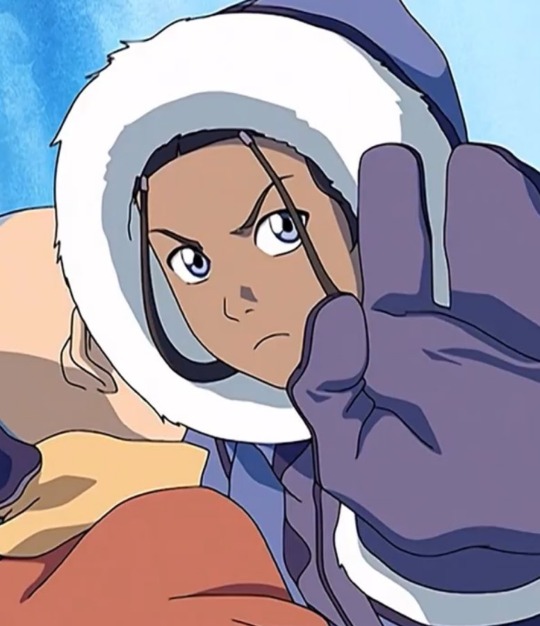
just LOOK at this
#if aang has zero haters it’s becuz katara has ended them all#atla#avatar the last airbender#aang#avatar#kataang#katara#avatar aang#pro kataang#it’s master katara’s and her husband aang who also just so happens to be the avatar
2K notes
·
View notes
Text
That one anti kataang who was like "I hope all the girls who ship kataang get a guy like aang" like ma'am are you blessing me???
#these are the types of things i get told from my closest friends and fellow aang stans#i hope you find someone like aang#aw thank you that's so sweet ☺#aang#aanglove#aang defense squad#pro aang#aang x reader#atla#avatar the last airbender#cosmi's post#kataang#pro kataang
229 notes
·
View notes
Text
Hey so can we like stop with the "Zutara is for the girls and Kataang is for the boys" thing. It's silly and it's breakdancing just on the edge of gender essentialism.
The assumption that there is something inherent to Zutara that appeals predominantly to women and Kataang that appeals predominantly to men is dishonest because every ship can have appeal to all genders.
The discussion of the "female gaze" in Zutara and the "male gaze" in Kataang is also redundant. I enjoy dissecting the concept of "the gaze", however it is important to note that the "female gaze" doesn't have a set definition or grouping of conventions it adheres to. Lisa French, Dean of RMIT University’s School of Media and Communication says:
“The female gaze is not homogeneous, singular or monolithic, and it will necessarily take many forms... The aesthetic approaches, experiences and films of women directors are as diverse as their individual life situations and the cultures in which they live. The "female' gaze” is not intended here'to denote a singular concept. There' are many gazes."
Now excuse me as I put on my pretentious humanistics student hat.
Kataang's appeal to women and the female gaze
Before I start, I want to note that the female gaze is still a developing concept
There are very few female film directors and writers, and most of them are white. The wants and desires of women of colour, the demographic Katara falls into, are still wildly underepresented. Additionally, the concept of the female gaze had many facets, due to it being more focused on emotional connections rather than physical appearance as the male gaze usually is. Which means that multiple male archetypes fall into the category of "for the female gaze".
The "female gaze" can be best described as a response to the "male gaze", which was first introduced by Laura Mulvey in her paper: "Visual Pleasure and Narrative Cinema" , however the term "male gaze" itself was not used in the paper.
Mulvey brought up the concept of the female character and form as the passive, objectified subject to the active voyeuristic male gaze, which the audience is encouraged to identify, usually through the male character.
To quote her:
"In a world ordered by sexual imbalance', pleasure' in looking has been split between active'/male' and passive/female'. The determining male gaze' projects its fantasy onto the female' figure', which is styled accordingly."
Mulvey also brings up the concept of scopopfillia (the term being introduced by Freud), the concept of deriving sexual gratification from both looking and being looked at. This concept has strong overtones of voyeurism, exhibitionism and narcissism, placing forth the idea that these overtones are what keeps the male viewer invested. That he is able to project onto the male character, therefore being also able to possess the passive female love interest.
However, it's important to note that Mulvey's essay is very much a product of its times, focused on the white, heterosexual and cisgender cinema of her time. She also drew a lot of inspiration from Freud's questionable work, including ye ole penis envy. Mulvey's paper was groundbreaking at the time, but we can't ignore how it reinforces the gender binary and of course doesn't touch on the way POC, particularly women of colour are represented in film.
In her paper, Mulvey fails to consider anyone who isn't a white, cis, heterosexual man or woman. With how underrepresented voices of minorities already are both in media and everyday life, this is something that we need to remember and strive to correct.
Additionally Mulvey often falls into gender essentialism, which I previously mentioned at the beginning of this post. Funny how that keeps coming up
"Visual Pleasure and Narrative Cinema" started a very interesting and important conversation, and I will still be drawing from certain parts of it, however huge swathes of this text have already become near archaic, as our culture and relationship with media evolves at an incredible pace.
And as filmaking evolves, so does our definition of the male and female gaze. So let's see what contemporary filmakers say of it.
In 2016, in her speech during the Toronto International Film Festival , producer of the TV series Transparent, Jill Soloway says:
“Numero uno, I think the Female Gaze is a way of “feeling seeing”. It could be thought of as a subjective camera that attempts to get inside the protagonist, especially when the protagonist is not a Chismale. It uses the frame to share and evoke a feeling of being in feeling, rather than seeing – the characters. I take the camera and I say, hey, audience, I’m not just showing you this thing, I want you to really feel with me.
[Chismale is Soloway's nickname for cis males btw]
So the term "female gaze" is a bit of a misnomer, since it aims to focus on capturing the feelings of characters of all genders. It's becoming more of a new way of telling stories in film, rather than a way to cater to what white, cisgender, heterosexual women might find attractive in a man.
Now, Aang is the decided protagonist of the show, however, Atla having somewhat of an ensemble cast leads to the perspective shifting between different characters.
In the first episode of atla, we very much see Katara's perspective of Aang. She sees him trapped in the iceberg, and we immediately see her altruism and headstrong nature. After she frees Aang, we are very much first subjected to Katara's first impressions of him, as we are introduced to his character. We only see a sliver of Aang's perspective of her, Katara being the first thing he sees upon waking up.
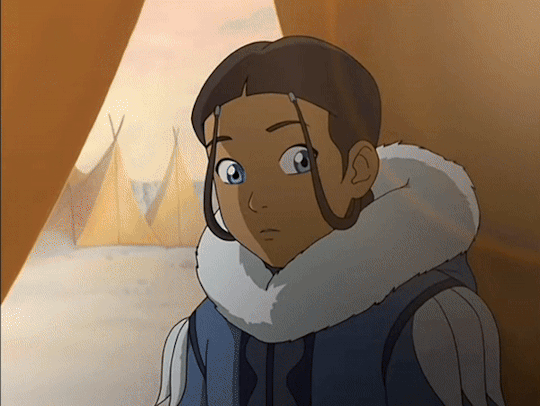
We see that she is intrigued and curious of him, and very excited about his presence. She is endeared and amused by his antics. She is rediscovering her childish side with his help. She is confiding in him about her own trauma surrounding the Fire Nation's genocide of the Southern Waterbenders. She is willing to go against her family and tribe ans leave them behind to go to the Northern Water Tribe with Aang. We also see her determination to save him when he is captured.
As the show moves on and the plot kicks into gear, we do shift more into Aang's perspective. We see his physical attraction to her, and while we don't see Katara's attraction quite as blatantly, there are hints of her interest in his appearance.

This is where we get deeper into the concept of Aang and Katara's mutual interest and attraction for one another. While her perspective is more subtle than most would like, Katara is not purely an object of Aang's desire, no more than he is purely an object of her desire.
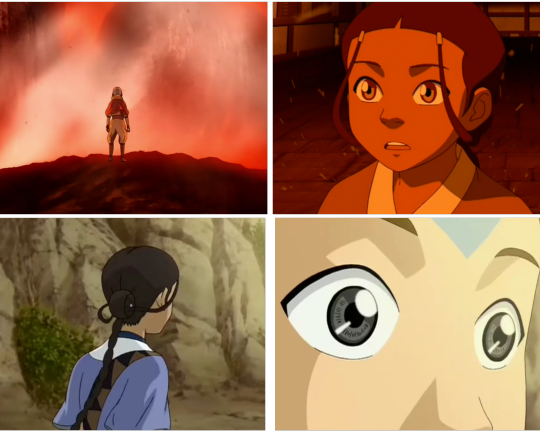
When analysing this aspect of Katara and Aang's relationship, I couldn't help but be reminded of how Célene Sciamma's Portrait of a lady on fire (in my personal opinion, one of the best studies of the female gaze ever created) builds up its romance, and how it places a strong emphasis on the mutuality of the female gaze.
Portrait of a lady on fire's cinematography is very important to the film. We see the world through the perspective of our protagonist, a painter named Marianne. We also see her love interest, Héloïse, the woman whom she is hired to paint a portrait of, through Marianne's lense.
We see Marianne analyse Héloïse's appearance, her beauty. We look purely through Marianne's eyes at Héloïse for a good part of the movie, but then, something unexpected happens. Héloïse looks back. At Marianne, therefore, in some way, also at the audience. While Marianne was studying Héloïse, Héloïse was studying Marianne.
We never shift into Héloïse's perspective, but we see and understand that she is looking back at us. Not only through her words, when she for example comments on Marianne's mannerisms or behaviours, but also hugely through cinematography and acting of the two amazing leads. (Noémie Merlant as Marianne and Adèle Haenel as Héloïse. They truly went above and beyond with their performances.)
This is a huge aspect of the female gaze's implementation in the film. The camera focuses on facial expressions, eyes and body language, seeking to convey the characters' emotions and feelings. There's a focus on intense, longing and reciprocated eye contact (I have dubbed this the Female Gays Gaze.). The characters stand, sit or lay facing each other, and the camera rarely frames one of them as taller than the other, which would cause a sense of power imbalance.
The best way to describe this method of flimaking is wanting the audience to see the characters, rather than to simply look at them. Sciamma wants us to empathise, wants us to feel what they are feeling, rather than view them from a distance. They are to be people, characters, rather than objects.
Avatar, of course, doesn't display the stunning and thoughtful cinematography of Portrait of a Lady on Fire, and Katara and Aang's relationship, while incredibly important, is only a part of the story rather than the focus of it.
However, the 'Kataang moments' we are privy to often follow a similar convention to the ones between Marianne and Héloïse that I mentioned prior.
Theres a lot of shots of Katara and Aang facing each other, close ups on their faces, particularly eyes, as they gaze at one another.
Katara and Aang are often posited as on equal grounds, the camera not framing either of them as much taller and therefore more powerful or important than the other. Aang is actually physically shorter than Katara, which flies in the face in usual conventions of the male fantasy. (I will get to Aang under the male gaze later in this essay)
And even in scenes when Aang is physically shown as above Katara, particularly when he's in the Avatar state, Katara is the one to pull him down, maintaining their relationships as equals.
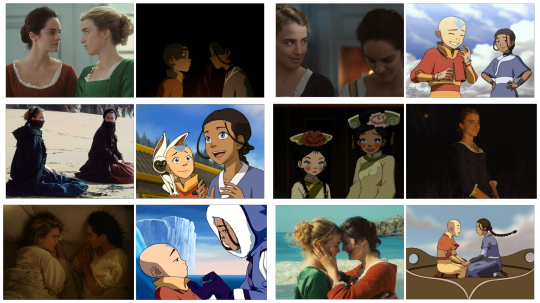
Despite most of the show being portrayed through Aang's eyes, Katara is not a passive object for his gaze, and therefore our gaze, to rest upon. Katara is expressive, and animated. As an audience, we are made aware that Katara has her own perspective. We are invited to take part in it and try to understand it.
Not unlike to Portrait of a Lady on Fire, there is a lot of focus placed on mannerisms and body language, an obvious example being Katara often playing with her hair around Aang, telegraphing a shy or flustered state. We also see her express jealousy over Aang, her face becoming sour, brows furrowed. On one occasion she even blew a raspberry, very clearly showing us, the audience, her displeasure with the idea of Aang getting attention from other girls.
Once again, this proves that Katara is not a passive participant in her own relationship, we are very clealry shown her perspective of Aang. Most of the scenes that hint at her and Aang's focus on their shared emotions, rather than, for example, Katara's beauty.
Even when a scene does highlight her physical appearance, it is not devoid of her own thoughts and emotions. The best example of this being the scene before the party in Ba Sing Se where we see Katara's looking snazzy in her outfit. Aang compliments her and Katara doesn't react passively, we see the unabashed joy light up her face, we can tell what she thinks of Aang's comment.
In fact, the first moment between Katara and Aang sets this tone of mutual gaze almost perfectly. Aang opens his eyes, and looks at Katara. Katara looks back.
There is, once again, huge focus on their eyes in this scene, the movement of Aang's eyelids right before they open draws out attention to that part of his face. When the camera shows us Katara, is zooms in onto her expression as it changes, her blinking also drawing attention to her wide and expressive eyes.

This will not be the first time emphasis is placed on Katara and Aang's mutual gaze during a pivotal moment in the show. Two examples off the top of my head would be the Ends of B2 and B3 respevtively. When Katara brings Aang back to life, paralleling the first time they laid eyes on one another. And at the end of the show, where their gaze has a different meaning behind it.
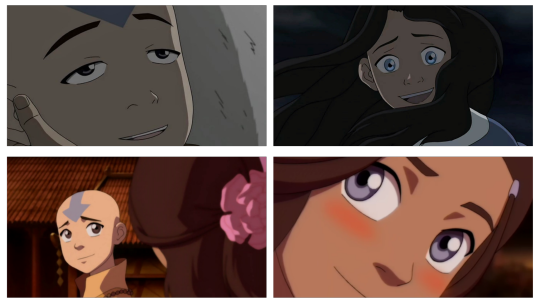
We see Katara's emotions and her intent telegraphed clearly in these instances.
In Book 1, we see her worry for this strange bald boy who fell out of an iceberg, which melts away to relief and a hint of curiosity once she ascertains that he isn't dead.
In B2 we once again see worry, but this time it's more frantic. Her relationship with Aang is much dearer to her heart now, and he is in much worse shape. When we see the relief on her face this time, it manifests in a broad smile, rather than a small grin. We can clearly grasp that her feelings for Aang have evolved.
In B3, we step away from the rule because Aang isn't on the verge of death or unconsciousness for the first time. It is also the first time in a situation like this that Aang isn't seeing Katara from below, but they are on equal footing. I attribute this to symbolising change of pace for their relationship.
The biggest obstacle in the development of Katara and Aang's romance was the war, which endangered both their lives. Due to this, there was a hesitance to start their relationship. In previous scenes that focused this much on Aang and Katara's mutual gaze, Aang was always in a near dead, or at least 'dead adjacent' position. This is is a very harsh reminder that he may very well die in the war, and the reason Katara, who has already endured great loss, is hesitant to allow her love for him to be made... corporeal.
However, now Aang is standing, portraying that the possibily of Katara losing him has been reduced greatly with the coming of peace, the greatest obstacle has been removed, and Katara is the one to initiate this kiss.
Concurrently, Katara's expression here does not portray worry or relief at all, because she has no need to be worried or relieved. No, Katara is blushing, looking directly at Aang with an expression that can be described as a knowing smile. I'd argue that this description is accurate, because Katara knows that she is about to finally kiss the boy she loves.
Ultimately, Katara is the one who initiates the kiss that actually begins her and Aang's romantic relationship.
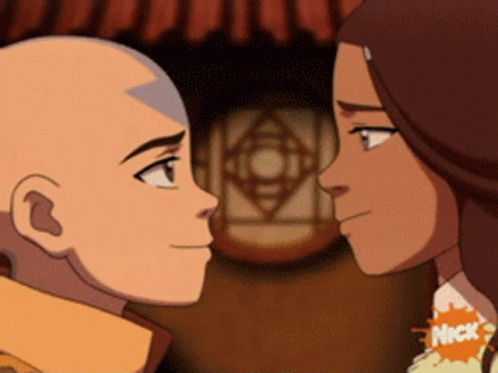
Kataang's appeal to women is reflected in how Katara is almost always the one to initiate physical affection with Aang. With only 3 exceptions, one of which, the Ember Island kiss being immediately shown by the narrative as wrong, and another being a daydream due to Aang's sleep deptivation. The first moment of outwardly romantic affection between Aang and Katara is her kissing his cheek. And their last kiss in the show is also initiated by Katara.
I won't falsely state that Kataang is the perfect representation of the female gaze. Not only because the storyline has its imperfections, as every piece of media has. But also because I simply belive that the concept of the female gaze is too varied and nebulous to be fully expressed. With this essay, I simply wanted to prove that Kataang is most certainly not the embodiment of catering to the male gaze either. In fact it is quite far from that.
The aspects of Kataang that fall more towards embodying the female gaze don't just appeal to women. There's a reason a lot of vocal Kataang shippers you find are queer. The mutual emotional connection between Katara and Aang is something we don't have to identify with, but something we are still able to emphasise with. It's a profound mutual connection that we watch unfold from both perspectives that sort of tracends more physical, gendered aspects of many onscreen romances. You just need to see instead of simply look.
✨️Bonus round✨️
Aang under the gaze
This started off as a simple part of the previous essay, however I decided I wanted to give it it's own focus, due to the whole discourse around Aang being a wish-fullfilling self insert for Bryke or for men in genral. I always found this baffling considering how utterly... unappealing Aang is to the male gaze.
It may surprise some of you that men are also subjected to the male gaze. Now sadly, this has nothing to do with the male gaze of the male gays. No, when male characters, usually the male protagonist, are created to cater to the male gaze, they aren't portrayed as sexually desirable passive objects, but they embody the active/masculine aide of the binary Laura Mulvey spoke of in the quote I shared at the beginning of this essay.
The protagonist under the male gaze is not the object of desire but rather a character men and boys would desire to be.
They're usually the pinnacle of traditional, stereotypical masculinity.
Appearance wise: muscular but too broad, chiseled facial features, smouldering eyes, depending on the genre wearing something classy or some manner of armour.
Personalitywise they may vary from the cool, suave James Bond type, or a more hotblooded forceful "Alpha male" type. However these are minor differences in the grand scheme of things. The basis is that this protagonist embodies some manner of idealised man. He's strong, decisive, domineering, in control, intimidating... you get the gist. Watch nearly any action movie. There's also a strong focus placed on having sway or power over others. Often men for the male gaze are presented as wealthy, having power and status. Studies (that were proved to be flawed in the way the data was gathered, I believe) say that womem value resources in potential male partners, so it's not surprising that the ideal man has something many believe would attract "mates". [Ew I hated saying that].
Alright, now let's see how Aang holds up to these standards.

Well... um...
Aang does have power, he is the Avatar. However, he is often actually ignored, blown off and otherwise dismissed, either due to his age or his personality and ideals being seen as unrealistic and foolish. Additionally, Aang, as a member of a culture lost a century ago, is also often posited as an outsider, singled out as weak, his beliefs touted as the reason his people died out and.
Physically, Aang doesn't look like the male protagonist archetype, either. He isn't your average late teens to brushing up against middle aged. Aang is very much a child and this is reflected in his soft round features, large eyes and short, less built body. This is not a build most men would aspire to. Now, he still has incredible physical prowess, due to his bending. But I'm not sure how many men are desperate to achieve the "pacifist 12 year old" build to attract women.
Hailing from a nation that had quite an egalitarian system, Aang wouldn't have conventional ideas surrounding leadership, even if he does step up into it later. He also has little in the way of possessions, by choice.
As for Aang's personality, well...

I mean I wouldn't exactly call him your average James Bond or superhero. Aang is mainly characterised through his kindness, empathy, cheerful nature and occasional childishness (which slowly is drained as the trauma intesifies. yay.)
Aang is very unwilling to initiate violence, which sets him aside from many other male protagonists of his era, who were champing at the bit to kick some ass. He values nature, art, dance and fun. He's in tune with his emotions. He tries to desecalate situations before he starts a fight.
Some would say many of Aang's qualities could be classified as feminine. While the other main male characters, Zuko and Sokka try to embody their respective concepts of the ideal man (tied to their fathers), Aang seems content with how he presents and acts. He feels no need to perform masculinity as many men do, choosing to be true to his emotions and feelings.
These "feminine" qualities often attract ridicule from other within the show. He is emasculated or infantiliased as a form of mockery multiple times, the most notable examples being the Ember Island play and Ozai tauntingly referring to him as a "little boy". Hell, even certain Aang haters have participated in this, for example saying that he looks like a bald lesbian.
I'd even argue that, in his relationships with other characters, Aang often represents the passive/feminine. Especially towards Zuko, Aang takes on an almost objectified role of a trophy that can be used to purchase Ozai's love. [Zuko's dehumanisation of others needs to be discussed later, but it isn't surprising with how he was raised and a huge part of his arc is steerring away from that way of thinking.]
Aang and Zuko almost embody certain streotypes about relationships, the forceful, more masculine being a literal pursuer, and the gentler, more feminine being pusued.
We often see Aang framed from Zuko's perspective, creating something akin to the mutual gaze of Katara and Aang, hinting at the potential of Zuko and Aang becoming friends, a concept that is then voiced explicitly in The Blue Spirit.
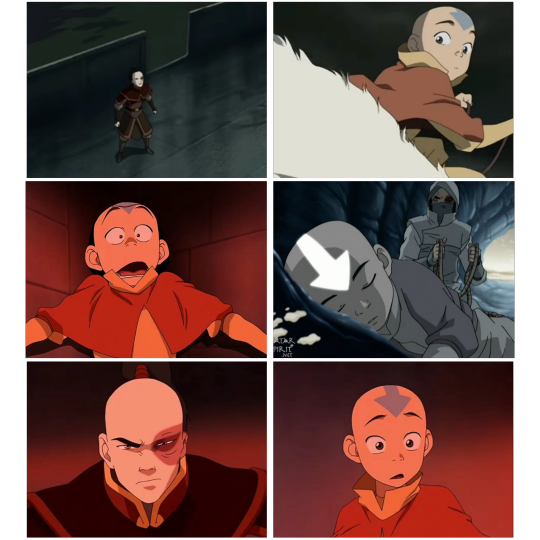
However, unlike Katara, Zuko is unable to empathise with Aang at first, still seeing Aang as more of an object than a person. We have here an interesting imbalance of Aang seeing Zuko but Zuko meerly looking at Aang.
There is a certain aspect of queer metaphor to Zuko's pursuit of Aang, but I fear I've gotten off topic.
Wrapping this long essay up, I want to reiterate that I'm not saying that Zutara isn't popular with women. Most Zutara shippers I've encountered are women. And most Kataang shippers I've encountered are... also women. Because fandom spaces are occupied predominantly by women.
I'm not exactly making a moral judgement on any shippers either, or to point at Kataang and go: "oh, look girls can like this too. Stop shipping Zutara and come ship this instead."
I want to point out that the juxtaposition of Zutara and Kataang as respectively appealing to the feminine and masculine, is a flawed endeavour because neither ship does this fully.
The concept of Kataang being a purely male fantasy is also flawed due to the points I've outlied in this post.
Are there going to be male Kataang shippers who self insert onto Aang and use it for wish fulfilment? Probably. Are there going to be male Zutara shippers who do the same? Also probably.
In the end, our interpretation of media, particularly visual mediums like film are heavily influenced by our own biases, interests, beliefs andmost importantly our... well, our gaze. The creators can try to steer us with meaningful shots and voiced thought, directing actors or animating a scene to be a certain way, but ultimately we all inevitably draw our own conclusions.
A fan of Zutara can argue that Kataang is the epitome of catering to the male gaze, while Zutara is the answer to women everywhere's wishes.
While I can just as easily argue the exact opposite.
It really is just a matter of interpretation. What is really interesting, is what our gaze says about us. What we can see of ourselves when the subject gazes back at us.
I may want to analyse how Zutara caters to the male gaze in some instances, if those of you who manage to slog through this essay enjoy the subject matter.
#ok getting off my soapbox#i forgot how much i love to write these long sprawling essays...#kataang#pro kataang#aang#pro aang#aanglove#aang defense squad#pro katara#katara defense squad#kataang love#zuko#avatar#atla#avatar: the last airbender#the last airbender#avatar the last airbender#aang the last airbender#anti zutara
457 notes
·
View notes
Text
It’s one thing to prefer Zutara over kataang, but people really straight up dislike or even hate Aang? HOW???




LOOK AT HIM HES SILLY
AND HE’S 12 WHY ARE YOU HATING ON A 12 YEAR OLD
#eyeball speaks#avatar: the last airbender#alta#Aang#avatar aang#alta aang#Kataang#pro kataang#pro aang
179 notes
·
View notes
Text

Weird how you blocked me before I could even get a response in and how you’re scrolling through these tags as Zutara shipper you fucking loser. My original point was that you shouldn’t expect people to take you seriously if you’re bringing up his appearance or “her type” as some sort of point against the relationship because it’s very stupid. I then brought up how I think it’s weird you guys consistently make fun of and bring up him being bald in general, when it’s something that he clearly practices and takes seriously because it was something that Air Nomads participated in. I was talking about the disrespect in general as well, It constantly gets made fun of by people like Zuko and outside of the show people constantly berate him or talk down on him for participating in it. Don’t give a fuck whether or not you think she would be “attracted to him”. Literally you genuinely might be one of the biggest losers on this app along with those two other freaks who will not be named because they might appear and spook me

Like how did you even find the post? I genuinely do not want to deal with you people
144 notes
·
View notes
Text
accusing kataang to be "hero gets the girl" (reducing katara to "the girl" ok) when actually "hero gets the girl" fits more....Zuko and Mai
accusing aang, the genocide survivor, to be rewarded by the narrative when the character who got totally forgiveness (way too fast from the gaang), the throne, iroh back, his mother back and a "new better sister" is....zuko, not aang
mind you, i love zuko and maiko, but certain people here should stop projecting their nonsense onto aang
239 notes
·
View notes
Text
One thing I am SICK of is atla fans especially z*tara fans making Zuko the cool tough bad boy and Katara being the sweet innocent nerd
NO
Katara is the cool smart bad girl who probably knows how to ride a motorcycle and Aang is her cute pacifist boyfriend
#atla#Katara atla#Kataang#aang atla#anti Zutara#anti zutara stans#pro kataang#Kataang atla#pro katara#pro aang#katara x aang#avatar: the last airbender#avatar the last airbender
223 notes
·
View notes
Text
“Why should I choose cosmic energy over Katara?”

Sacrifice and love 🤍

#atla#katara#aang#kataang#avatar the last airbender#aang x katara#kataang defense#pro kataang#avatar: the last airbender#atla fanart#my art style
275 notes
·
View notes
Text
This oficial epic image is amazing:
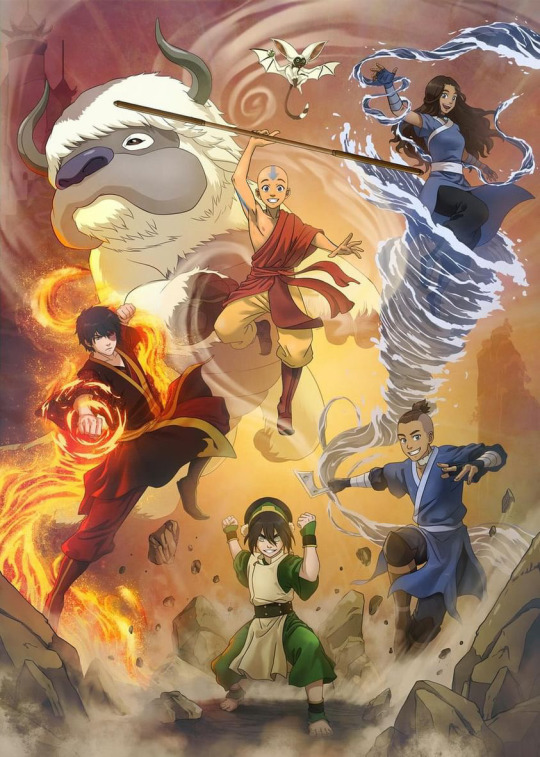
And the most powerful couple of ATLA:
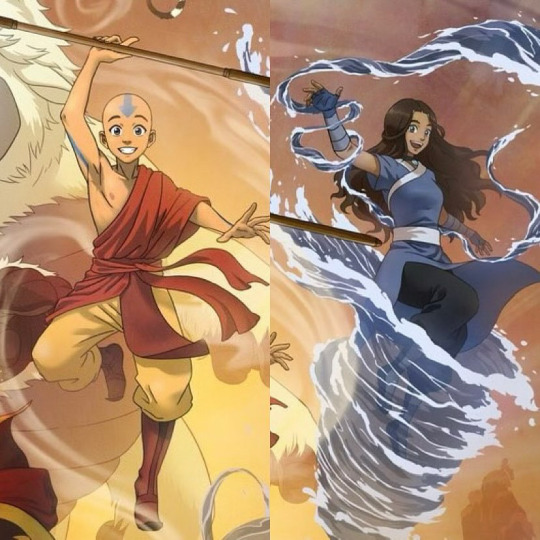
#avatar#avatar the last airbender#atla#kataang#aang and katara#katara and aang#pro kataang#otp#aang x katara#avatar studios#atla kataang#katara x aang#aang#katara#sokka#toph beifong#zuko#appa atla#momo atla#avatar the legend of aang
840 notes
·
View notes
Text
im sorry but i actually love kataang’s height difference in the show and i think it’s one of the cutest things ever
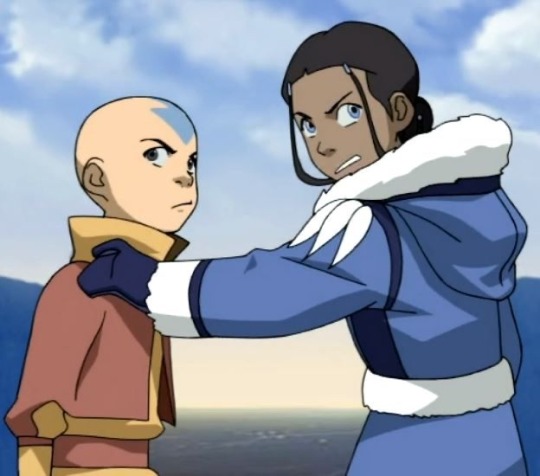
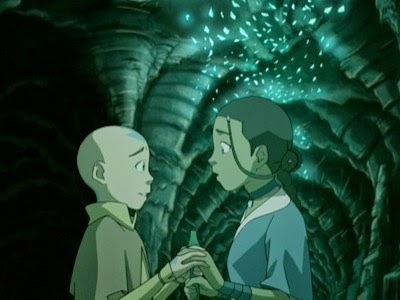
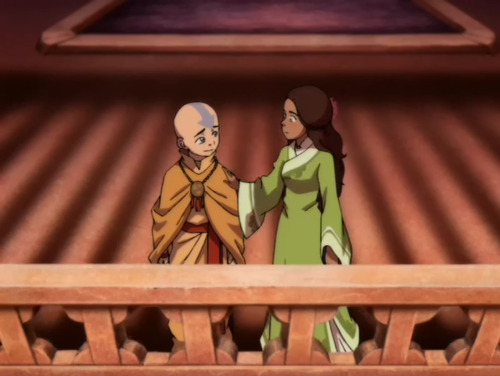

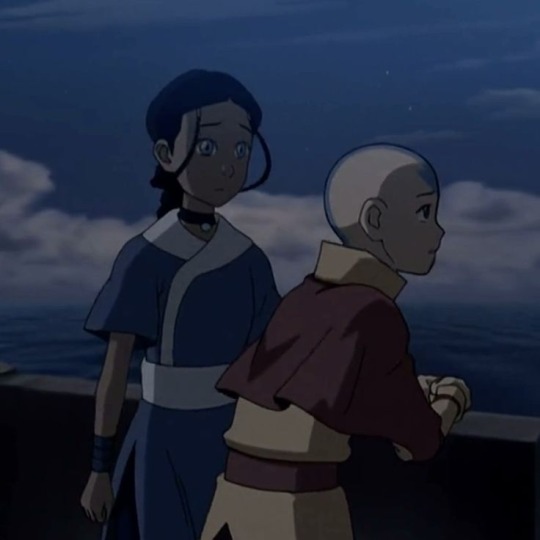
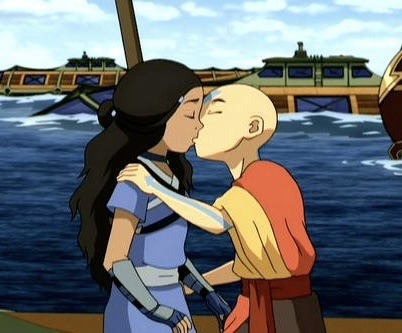
like idg when anti shippers are like “whY wOuLd KatARA like AANG he’s SHORTER than HeR!!1!1!” Like ok…??? And ???? it’s fucking adorable. yeah I know eventually he gets taller than her in the comics when they get older but idc, let me have my short king Aang <333 the fact he’s shorter than her when they get together is so real to me and no one can take cartoon!kataang height diff from me
3K notes
·
View notes
Text
Kataang: *fights only 1% of the time and the other 99% is spent standing at each others side, supporting each other*
Everyone: "They are so toxic"
Zutara: *were enemies and hated each other for 3 seasons and were only on good terms for the last three episodes*
Everyone: "omg they're so perfect for each other"
#anti zutara fandom#anti zutara stans#anti zutara#pro aang#atla#kataang#pro kataang#aang#pro katara#atla katara#katara#katara x aang
119 notes
·
View notes
Text
“katara wouldn’t date as guy shorter than her!” well jokes on you because she literally did.




have you considered not projecting yourself onto a 14 year old girl?
#some of you people are a little bit too old to be fangirlibg over zuko (a 16 year old boy!!!!)#aang#katara#kataang#pro kataang#atla#avatar the last airbender#avatar#avatar aang#pro aang
600 notes
·
View notes